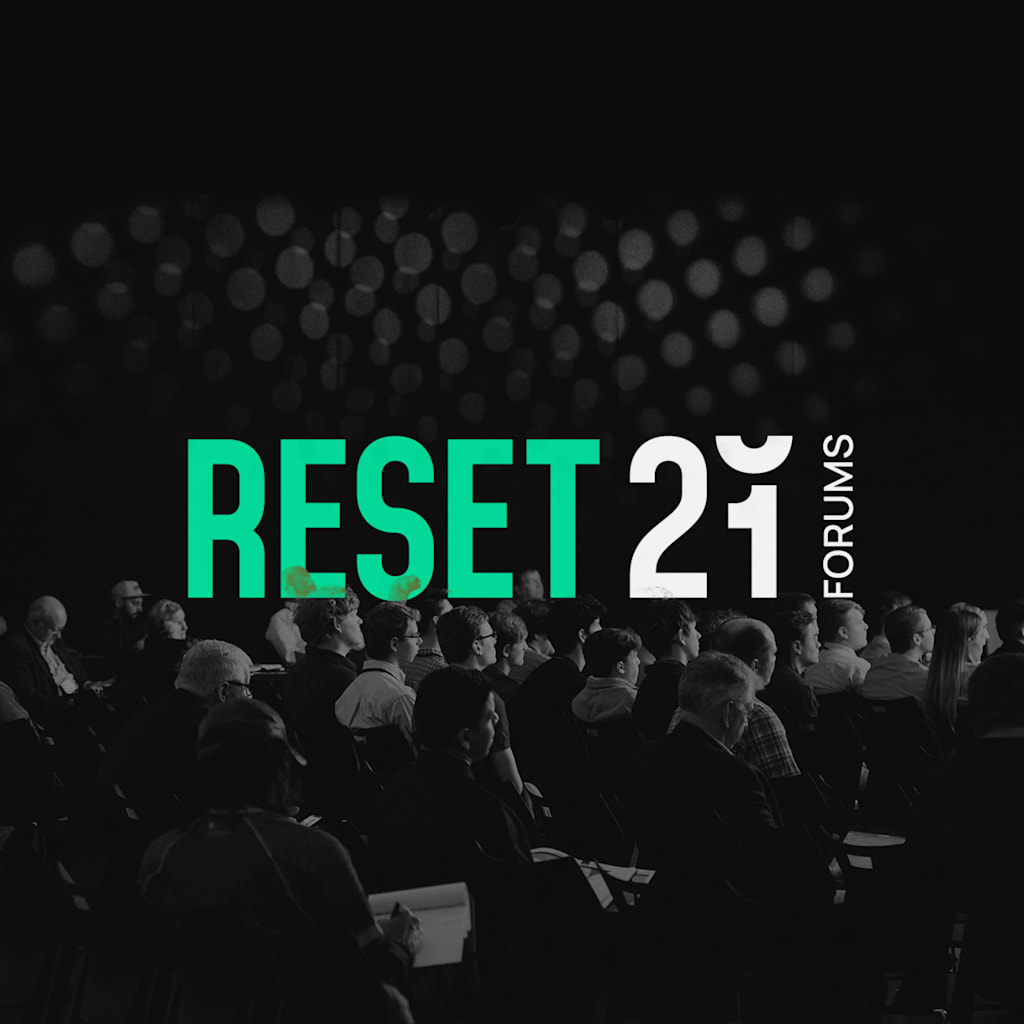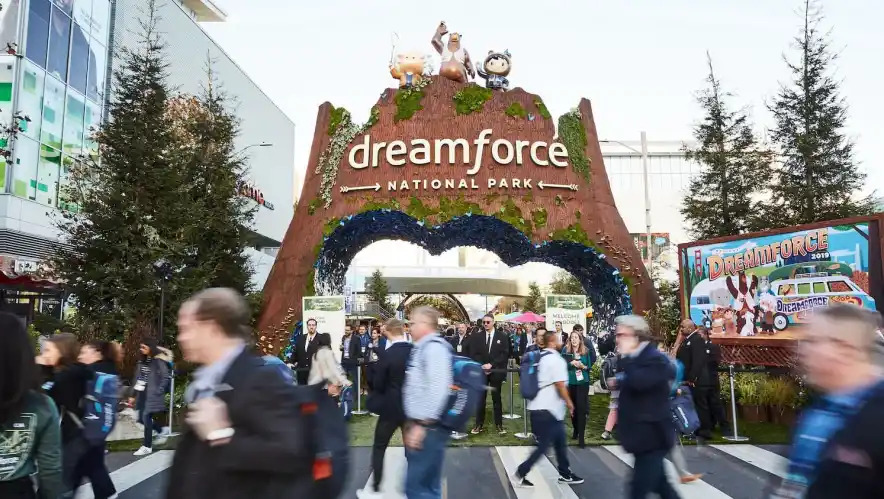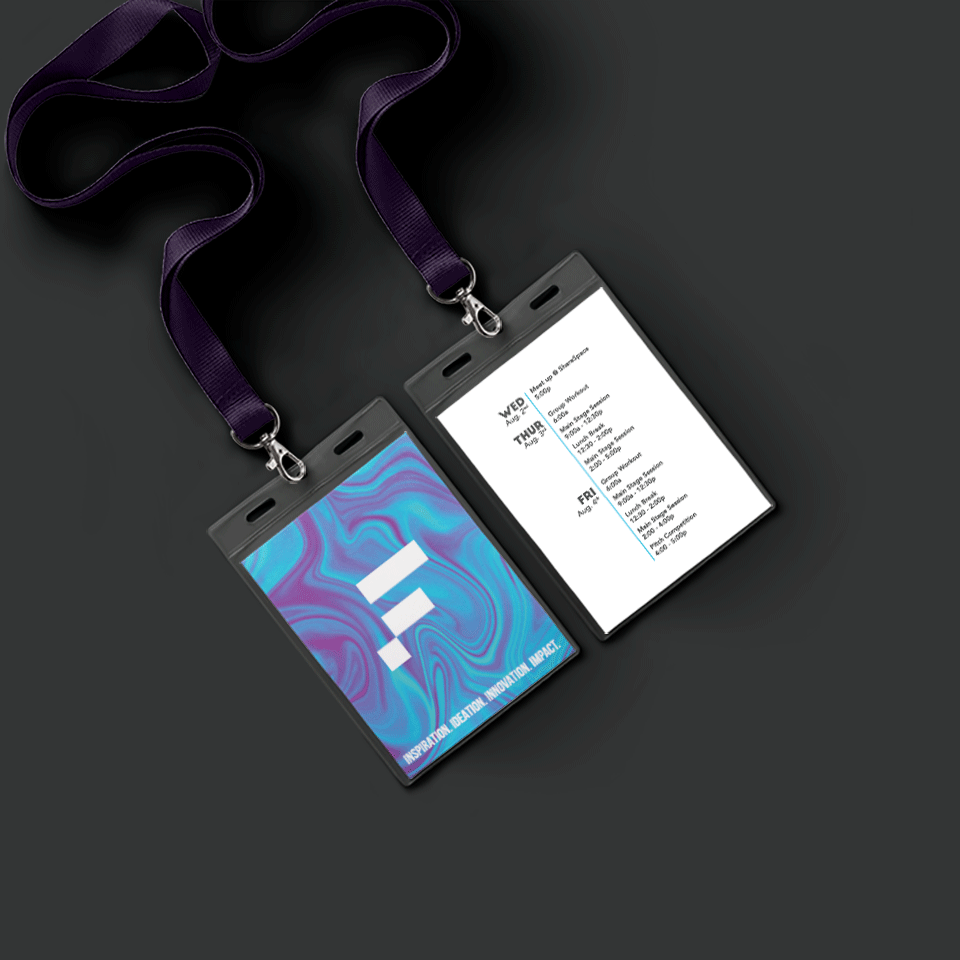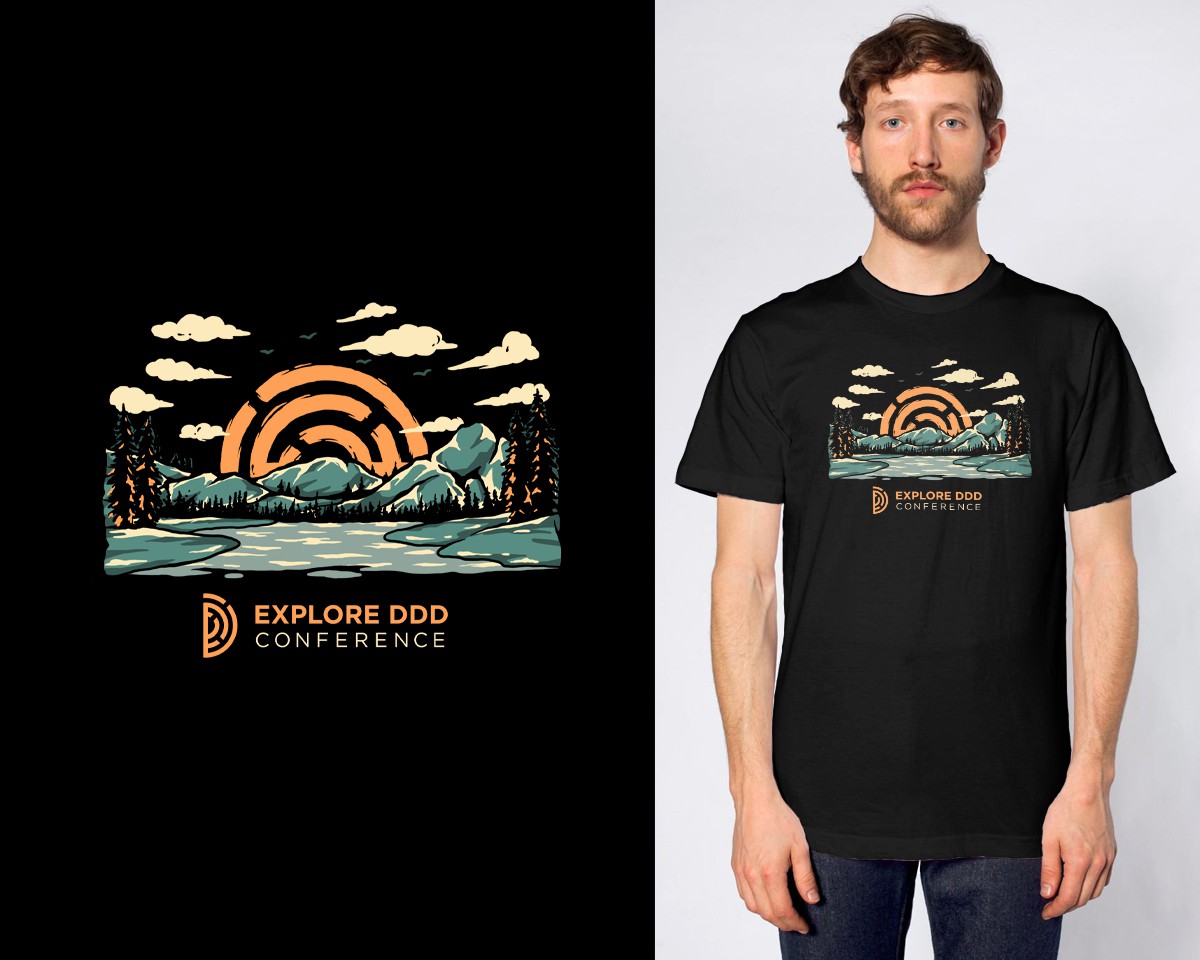A corporate event provides a novel, educational, sometimes thrilling break from business-as-usual. It’s much more impactful than a party and more substantial than a company meeting. With effective corporate event planning and execution, a corporate event is an interactive personalized experience for clients, employees and everyone in between. It’s no wonder then that 74% say their perception of a brand improved after attending a corporate event.
But it’s exactly because corporate events are so unlike the standard workday, involving so many moving pieces, that they can be intimidating for first-time-planners. That’s why when figuring out how to plan a corporate event, it pays to have a detailed checklist to follow from the early stages to the days and weeks following. In this ultimate corporate event planning guide, we’ll walk you through the process step-by-step, providing tips and a downloadable checklist you can use for any type of corporate event, big or small.
Table of Contents
- What is a corporate event?
- Initial event planning: up to a year in advance
- Finalizing event plans: 6 to 8 months in advance
- Event lead-up: 3 months before the event
- Event follow-up: days and months after the event
- Tips and ideas for corporate event success
What is a corporate event?
A corporate event is a gathering put on by an organization for branding, networking or business purposes. It can describe anything from a business dinner with a handful of executives to a weekend-long conference with thousands of attendees. No matter the scale, every corporate event takes design, research and logistical planning to be a success.

Source: Logo design by sergiOne Ⓢ via 99designs by Vista
Throughout this guide, we’ll be considering the needs of large-scale events, but keep in mind that you can adapt this checklist to the scale of your event. For example, a team rock-climbing trip might not require year-long preparation, but it does require someone in charge, a schedule and budget, and accounting for travel and meals.
Common types of corporate events
There is no limit to the many ways a corporate event can manifest. But knowing the most common types can provide a jumping off point for picturing your own corporate event.
Internal events
Internal corporate events are focused on bolstering relationships within the company and are generally of a smaller scale. Some examples include:
- Training seminars
- Team building events
- Company retreats
External events
External corporate events are generally of a larger scale and focused on building relationships outside the company, such as with business leads, existing customers, industry professionals and other corporations. Some examples include:
- Product launches
- Milestone celebrations
- Industry conferences
- Fundraisers
Initial event planning: up to a year in advance
The initial planning phase is where organizers determine the overall concept and purpose of the event. At this stage, the focus is the big picture, but by the end of it, you should have everything you need to begin building the event.
Step 1: Download a corporate event planning checklist
An event planning checklist provides a clear roadmap through the many tasks up ahead. Download your corporate event planning checklist here and start checking those early tasks off.
Step 2: Outline the goal of the event
For a corporate event to be successful, there must be a means to measure success. From the very beginning, organizers should consider what benefit the company is aiming to get out of the event.
While a basic corporate event objective might be increased profit, try to be as specific as possible, such as a targeted revenue stream or a ballpark figure.
Tip
Most corporate events will have several objectives. Create a prioritized list, outlining a primary goal, secondary goal and so on.

Source: Illustration by DoRoCreates via 99designs by Vista
Use these examples of common corporate event goals to inspire your own:
- Increase brand awareness
- Celebrate achievements
- Heighten employee engagement
- Encourage investor confidence
- Provide education and training
Step 3: Research your audience
Every aspect of the event, from the theme and location to the menu, should cater to a specific audience. You may already know your prospective invitees by broad categories, such as press outlets, customers or employees, but dig deeper.
Beyond target audience research like demographic statistics, craft personas to put names, faces and personalities to that data. Similarly, you can adapt a customer journey map to plan the ideal guest experience. At this stage, you should begin considering venue capacity based on the size of your prospective audience.
Step 4: Brainstorm the event concept
The concept is the basic plan for what your corporate event will actually be. Start broad by deciding whether it will be an in-person, virtual or hybrid event. Beyond budget and logistical reasons, corporations often choose virtual events to reach faraway audiences remotely. However, with 82% of corporate event-goers reporting a preference for in-person gatherings, a hybrid event with streaming options for those who can’t attend might be your best bet.

Source: Dreamforce conference via Salesforce
Corporations also often come up with a theme that encapsulates the basic concept and provides a structuring device for the event content. Corporate event themes are often aspirational—like how Salesforce refers to attendees of their Dreamforce conference as “Trailblazers” and designs the conference floor to resemble a national park.
Step 5: Calculate a budget
A corporate event budget grounds creative concepts in practicality. While you don’t need to have a finalized list of your event specs at this stage, start by researching the general cost of venues, event staff, design and logistics, and be sure to include an extra cushion for unexpected costs. Event planning management software often comes with cost calculators. Once you obtain an approved estimated budget, allocate percentages for each department, like technology, decorations, guest services and marketing.
Tip
Sponsorships from non-competitor businesses are a great way to inflate your budget. Not only do sponsors give you funds, they have a vested interest in promoting the event.
While virtual events are generally less expensive than in-person events, that doesn’t mean they’re cheap. In place of the multifaceted logistics that comes with a physical venue, organizers must invest heavily in technology.
Step 6: Delegate project management responsibilities
Corporate event planning involves many internal and external teams working in tandem on a growing number of tasks. To keep everything organized, make sure that everyone understands their role and assign team leaders to manage each group.
At this point, your corporate event plan should start to become granular, as you should know what tasks are needed to get the event off the ground. You may consider contracting an event planner at this stage, especially if this is your first corporate event.

Source: Illustration by Andres M. via 99designs by Vista
Step 7: Set up a timeline
A detailed timeline lets all organizers know how long each aspect of the planning process will take. Instead of choosing dates arbitrarily, get estimates from teams and set up timeframes and deadlines for each task, leaving additional time for underestimation. Project management software, like Basecamp and monday, can ensure everyone involved remains on the same page.
At this stage, you should settle on a tentative date for the event, which will be finalized after the venue is booked. Keep an eye out for scheduling conflicts like holidays or competing events.
Step 8: Create a corporate event pitch deck
A corporate event pitch deck is a document presenting all of your plans thus far, including your goal, audience and concept. Beyond this, include information about your company story and brand. The purpose of this pitch deck is to introduce external partners, like vendors, sponsors and contract staff, to your business and expectations for the event. This document can also be adapted to venue and partnership proposals.

Source: Pitch deck design by Yevhen Genome via 99designs by Vista
Finalizing the event plan: 6 to 8 months in advance
This phase of corporate event planning takes the big picture ideas from the previous stage and solidifies them into concrete details. By the end, you should be ready to begin full production on the event.
Step 9: Detail the event programming and content
A corporate event program consists of moment-to-moment interactions. Develop a detailed itinerary for what event programming will consist of, such as keynotes, demonstrations and entertainment. In addition, plan free time for meals, networking and exploring. The key to success is a variety of planned engagement, from one-way presentations to group chats. Around half of corporate event attendees prefer hands-on experiences, whereas the other half prefer learning from experts.
For virtual events, presentational content represents the bulk of programming out of necessity, and organizers must work hard to ensure participants don’t lose interest. Prerecorded showcases can provide room for creative editing and visual effects and support on-demand viewing. Live streams come with more immediacy, accommodate conversational discussions and give the speakers the opportunity to respond to questions.
Step 10: Find the right venue
For in-person events, the venue will have the single biggest impact on the atmosphere. While that’s a lot of pressure, you can narrow down your options through basic necessities like capacity, location, pricing and availability. Your event may involve more specific needs, like a kitchen for caterers, strong wifi and built-in structures for AV tech. Once these concerns are taken care of, you can consider venues based on ambiance.
Take the area surrounding the prospective venue into account, like whether it has public transportation and options for post-event gatherings, plus local vendors you can incorporate into your event.

Source: 3D venue design by BenTō. via 99designs by Vista
Tip
While brands on a tight budget can host virtual events on Zoom or a third party streaming app, consider streaming through a branded website where you have more control over the experience.
Step 11: Customize your venue space
Personalize your venue space with banners, pop-up displays, table coverings, posters, signage and other decorations. While many of these will serve a practical function, like directing guests where to go, a skilled graphic designer can tailor even the most incidental event materials to your unique theme. You can also work with a lighting designer and audio producer on creating impactful moments like creative lighting and well-timed announcements during speaker presentations.
Step 12: Book event staff and guest speakers
Depending on the size of your corporate event, it may take a village to keep it moving. Research all of the personnel you will need before, during and after the event. This list might include guest speakers, caterers, videographers, photographers, AV technicians, decorators, drivers, security, first aid medics and ushers.
When booking these specialists, you will need to shop around for competitive quotes and negotiate payment schedules. Don’t forget to secure bios and headshots from speakers and entertainers to use in programs and marketing materials.
Event lead-up: 3 months before the event
In this phase of corporate event planning, you will solidify all logistics and produce event collateral, from marketing materials to guest resources. By the end, you should be fully ready to launch the event.
Step 13: Coordinate logistics for travel and lodging
If your corporate event will involve travel, do everything you can to ease these logistics ahead of time. While out-of-town presenters will require hotel accommodations paid for by the business, don’t leave attendees to fend for themselves. Offer discounts and integrate airfare, hotel and rideshare booking tools into an event website. You may also need to book private buses to shuttle guests to the venue or between locations.
Tip
Partner with travel providers to offer discounts for customers associated with the event.
Step 14: Launch an event marketing campaign
An event marketing campaign should accomplish two main goals: notifying prospective guests about the event and inspiring attendance. Start as early as possible (at least three months before) so that attendees have advanced warning to adjust their schedules. Although marketing is usually directed towards an external audience, don’t neglect “selling” an internal event to employees.

Source: Brand identity design by ms.galleya via 99designs by Vista
Many corporations start with a logo design and brand identity for the event, which enhances memorability and ensures marketing materials are consistent. For print media, flyers work well for general announcements, postcards can help you reach specific zip codes and brochures can detail event-day programming. Finally, put together a press release to get your event covered by industry journalists.
Tip
A dedicated event website can act as a landing page and hub for all your digital marketing efforts, like social media, email and digital ad campaigns.
Step 15: Develop event-day guest resources
To be active participants, your guests will need tools during the event. For starters, they might need name tags, lanyards, schedules, maps, menus, place cards, notepads, post-it notes and writing implements. Additionally, many corporations develop a dedicated app for the event, which—while more expensive than printing—can consolidate many of these needs.

Source: Schedule lanyard design by Empierce1119 via 99designs by Vista
Step 16: Rehearse
With your event day plans and personnel in place, all that’s left to do is rehearse! Make sure that setup between programming is well coordinated, speakers and staff are familiar with the space and all technology has been tested.
Event follow-up: days and weeks after the event
In this final phase, you should look back at the event, learn from your experience and prepare for your next event.
Step 17: Send thank you cards to speakers, staff and vendors
Sending thank-you cards to vendors and contractors goes a long way in solidifying your relationships with those who made your corporate event a success. While this is a small courtesy, recognizing hard work will increase the likelihood these partners will want to work with you on your next event.
Step 18: Asses event performance against your goals
Even if your corporate event went off without a hitch, you won’t really know if it was a success until you look at the data. Here are some examples of key performance indicators or success metrics you can use to evaluate whether the event met your initial goals:
- RSVP numbers and important names
- Attendance figures, including new and returning attendees
- Revenue
- Q&A questions
- Website traffic or app engagement
- Social media tags, mentions and follower increase
- Registrations for upcoming events
- Attendee polls, ratings and feedback
Step 19: Gather feedback to catalog learnings
No matter your specific goals, attendee satisfaction is always the primary concern—without guests, after all, you wouldn’t have an event. Gathering feedback can be as simple as posting on social media (“Comment with your favorite moment from the conference!”) or as involved as a survey. The purpose is to consider not only what worked but what was truly memorable.
Beyond guests, make sure to get feedback from everyone involved, from internal organizers to support staff. As you document these learnings for your next event, present your findings to the rest of the company in a formal debrief.

Source: Illustration by Tami C. via 99designs by Vista
Step 20: Keep up engagement after the event
Although the event has passed, its legacy should continue on in attendee’s memories and newsfeeds. Continue to share photos and videos of the event on social media in the weeks and months that follow and encourage attendees to share their own. You can also share key statistics from the event, in the vein of Spotify Wrapped, (the number of questions asked, for example) to impress participants with the scope of the event.
After the event, when you have more data to share, is another good opportunity to organize a press release for industry or local press coverage. Keeping people talking about the event not only helps your brand awareness but ensures that the connections attendees made are lasting.
Tips and ideas for corporate event success
Ideas for corporate event engagement
Any corporate event that merely involves a series of presentations can easily become stale. Here are some engagement ideas to turn your attendees into participants:
- Schedule a variety of content such as Q&As, panels, breakout sessions, tours, hands-on training and networking exercises
- Inspire guests to take photos with art installments or creative backdrops
- Incentivize participation with discount codes and giveaways
- Plan ways to change scenery, through outside eating areas or trips to local points of interest, for example
- Hire game designers to craft custom interactive problem-solving experiences like mazes and puzzles
- Encourage social media hashtags and user generated content, especially for virtual events

Source: Logo design by PANG3STU via 99designs by Vista
Ideas for personalizing the event
The corporate event market is a billion dollar industry, which makes standing out from the crowd a challenge. Here are some ideas for giving your corporate event a personal touch:
- Design a logo and brand identity to distinguish the event
- Print event merchandise like t-shirts, tote bags, pins and stickers to create tangible memorabilia, promote your brand and help attendees connect with one another after of the event
- Brainstorm novel ways to incorporate your product into the event
- Go above and beyond with set design
- Incorporate seasonal themes to lend the event a sense of time and place
Ideas for guest care, inclusivity and accessibility
Whether your event caters to a dozen or a thousand guests, it’s your responsibility to look after them and to not exclude anyone. Here are some ideas for inclusion, accessibility and guest care for corporate events:
- Make sure all staff have been trained on fire drills or emergency exit procedures
- Contract a security team to keep your attendees safe
- Even if you aren’t catering food, make sure guests have access to water and soft drinks
- While venues are legally required to make their building accessible, the quality and depth of accessibility features can vary. Make this a priority when researching venues
- Ensure that menu options are varied and accommodate dietary restrictions. Ask guests for dietary requirements ahead of the event if there will be a sit down meal
- Hire a sign interpreter for presentations
- Avoid color coded signage; use icons instead
- For virtual events, use alternate formats for video presentations, like audio content that participants can listen to on the go
Plan a great corporate event
From heightened brand awareness to team bonding, an event can be a great asset to any organization. But it’s also a massive undertaking. Without a reliable plan, not only will you get overwhelmed, you may end up wasting time and money on an event that doesn’t meet its goals. That’s why a step-by-step corporate event planning checklist is a must-have guide to accompany you from the very early stages to the post-event debrief. With all the essential tasks laid out, it’s then up to you to make an event that’s truly unforgettable.




